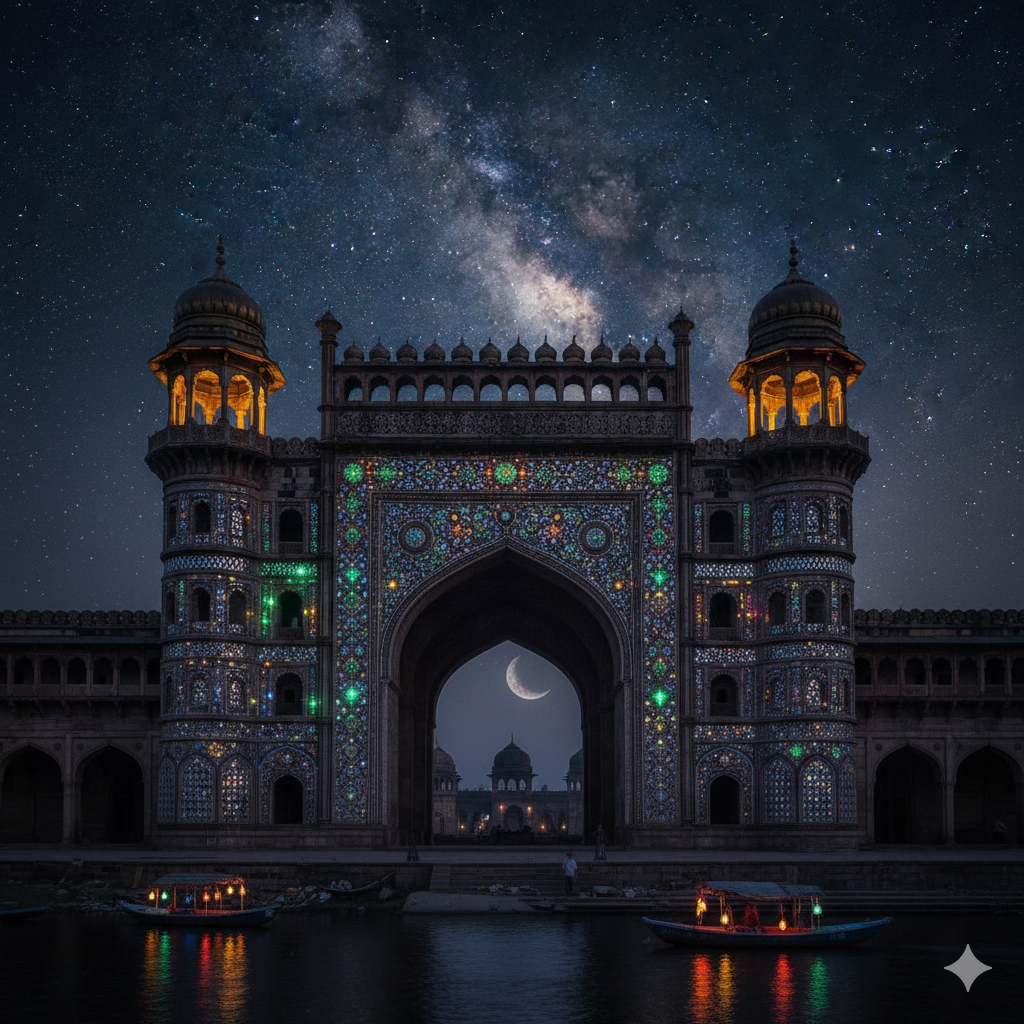Introduction
Ancient Uttar Pradesh, a region historically known as Kosala, Magadha, Kashi, and Prayag, occupies a central place in the cultural, political, and religious history of India. This area, lying in the Gangetic plains, has been the cradle of civilizations, a hub of learning, and a center of spiritual development since prehistoric times. To understand the evolution of ancient Uttar Pradesh, scholars rely on a wide variety of sources that provide insights into the social, political, economic, and cultural life of the region.
The study of these sources is essential for reconstructing the history, traditions, and heritage of ancient Uttar Pradesh. These sources include archaeological remains, inscriptions, coins, literary works, religious texts, foreign accounts, and oral traditions, each contributing uniquely to our understanding of the past. This article examines the importance of various sources in studying ancient Uttar Pradesh, analyzing their nature, utility, and limitations.
1. Archaeological Sources
Archaeology provides tangible evidence of the past, offering direct information about human activities, settlement patterns, and material culture. In the context of ancient Uttar Pradesh, archaeological sources are particularly crucial because they reveal aspects of daily life, technology, and trade that are often not recorded in texts.
1.1 Excavated Sites
Several important archaeological sites in Uttar Pradesh provide a window into ancient society:
- Kausambi (Kaushambi): Once the capital of the Vatsa kingdom, excavations here have uncovered fortifications, residential complexes, pottery, coins, and terracotta figurines. These findings illuminate urban planning, trade, and social organization.
- Ahichchhatra: Excavations reveal structures from the Mauryan and post-Mauryan periods, providing evidence of administrative organization and urban life.
- Sravasti: Important for Buddhist and Jain traditions, excavations reveal monastic complexes, stupas, and relics.
- Prayagraj (Prayag): Archaeological findings, including ashrams and ancient ghats, illustrate religious practices and settlement patterns along the rivers.
1.2 Pottery and Tools
Pottery, tools, and other artifacts help in dating sites and understanding technology. For example:
- Painted Grey Ware (PGW) culture in eastern Uttar Pradesh points to the late Vedic period.
- Black and Red Ware (BRW) is associated with earlier Iron Age settlements.
- Tools, beads, and ornaments suggest the level of craftsmanship and trade networks.
Importance
Archaeological sources provide:
- Direct evidence of material culture and technological progress.
- Insights into settlement patterns, fortifications, and urban planning.
- Clues to trade, agriculture, and socio-economic structures.
2. Epigraphic Sources (Inscriptions)
Inscriptions carved on stone, metal, or clay serve as official records of rulers, donations, and religious activities. In ancient Uttar Pradesh, they are invaluable for understanding political history, administrative systems, and socio-religious life.
2.1 Examples of Inscriptions
- Ashokan Edicts: Found in areas like Meerut, Kausambi, and Prayagraj, these inscriptions reflect the Mauryan administration, moral law (Dhamma), and the spread of Buddhism.
- Prayag Prashasti of Samudragupta: Inscribed on the Ashokan pillar at Prayagraj, it provides details about conquests, political organization, and imperial ideology during the Gupta period.
- Donative Inscriptions: Many temples and monasteries contain inscriptions recording land grants and donations, shedding light on religious patronage and social customs.
Importance
- Provide precise chronological information, often missing in literary sources.
- Reveal names of rulers, dynasties, and political events.
- Offer insights into social hierarchy, religious institutions, and governance.
Limitations
- Inscriptions are usually limited to elite and official perspectives.
- They may exaggerate achievements or omit failures, requiring corroboration with other sources.
3. Numismatic Sources (Coins)
Coins from ancient Uttar Pradesh are crucial for reconstructing economic history, political authority, and cultural exchange.
3.1 Types of Coins
- Punch-marked coins: From the 6th–2nd centuries BCE, these coins reveal early monetary practices and trade networks.
- Gupta Gold Coins: Featuring the images of Gupta rulers, these coins indicate prosperity, religious symbolism, and art.
- Regional Coins: Found in Kausambi, Ahichchhatra, and Prayag, they reflect the economic integration of local kingdoms.
Importance
- Offer information about rulers, their symbols, and religious affiliations.
- Provide evidence of trade and economic conditions.
- Help in dating archaeological layers and correlating historical events.
Limitations
- Coins cannot provide detailed narratives of political events.
- Interpretation often requires contextual archaeological evidence.
4. Literary Sources
Ancient literary texts provide rich information about the cultural, religious, and social life of Uttar Pradesh. These include Vedic texts, epics, Puranas, Buddhist and Jain literature, and classical Sanskrit works.
4.1 Vedic Texts
- Rigveda, Yajurveda, and Atharvaveda mention regions corresponding to modern Uttar Pradesh.
- The texts provide insight into rituals, social norms, and the significance of rivers like Ganga and Yamuna.
- Prayag, Kosala, and Kashi appear as centers of religious learning and sacrifices.
4.2 Epics: Ramayana and Mahabharata
- Ramayana: Kosala (Ayodhya) and Prayag are central to Rama’s life and journey, highlighting political geography and pilgrimage practices.
- Mahabharata: Mentions Kurukshetra, Prayag, and other sites, providing insight into kingdoms, warfare, and administration.
4.3 Puranas
- Skanda Purana, Matsya Purana, and Padma Purana elaborate on sacred geography, tirthas, and genealogies of kings.
- Provide a religious and cultural framework for understanding the significance of sites in Uttar Pradesh.
4.4 Buddhist and Jain Literature
- Buddhist texts such as Mahavamsa, Dipavamsa, and accounts of Xuanzang highlight Sravasti, Kushinagar, and Kaushambi as centers of monastic learning, meditation, and pilgrimage.
- Jain texts describe Kosambi and Varanasi as places associated with Jain tirthankaras and teachings.
Importance
- Provide a rich narrative of socio-political and cultural life.
- Offer mythological and historical context for sites and practices.
- Useful for understanding religious philosophy and ethical norms.
Limitations
- Often intertwined with mythology, requiring careful interpretation.
- May reflect regional or sectarian biases.
5. Foreign Accounts and Traveler Narratives
Accounts by foreign travelers provide an external perspective on ancient Uttar Pradesh. These are invaluable for cross-verifying Indian sources and understanding cultural exchange and economic activity.
5.1 Notable Travelers
- Fa-Hien (5th century CE): Visited Kosala and Prayag, describing Buddhist monasteries, daily life, and pilgrim practices.
- Xuanzang (7th century CE): Documented Sravasti, Kushinagar, Prayag, and Varanasi, highlighting religious institutions, geography, and governance.
- Al-Biruni (11th century CE): Recorded cultural practices, festivals, and intellectual traditions, providing insight into continuity of ancient traditions.
Importance
- Provide objective observations on social, economic, and religious life.
- Offer geographical and demographic information.
- Help trace the spread of religions, trade, and cultural interactions.
Limitations
- Observers may have limited understanding of local context or language.
- Accounts can be influenced by personal or religious bias.
6. Epics, Folklore, and Oral Traditions
Oral traditions, including folk songs, ballads, and regional narratives, serve as living sources of history, preserving cultural memory across generations.
6.1 Examples
- Alha-Udal ballads from Bundelkhand preserve historical memories of local heroes.
- Oral accounts of Rama’s exile and pilgrimages in Kosala and Prayag convey cultural and religious significance.
- Folk songs associated with river festivals and fairs reflect social customs, agrarian life, and spiritual beliefs.
Importance
- Preserve subaltern and local perspectives often missing in elite texts.
- Offer insights into popular religion, ethics, and social values.
- Complement written sources, filling gaps in historical understanding.
Limitations
- Oral traditions may change over time, leading to distortions.
- Often lack precise chronological markers.
7. Material Culture and Artifacts
Artifacts such as tools, ornaments, pottery, sculptures, and architectural remains provide evidence of cultural achievements and social organization.
7.1 Examples in Uttar Pradesh
- Terracotta figurines from Kausambi and Ahichchhatra indicate artistic expression and religious symbolism.
- Stone and brick temples in Varanasi and Prayag showcase architectural innovations.
- Stupas at Sravasti reflect Buddhist art and patronage.
Importance
- Reveal aesthetic sensibilities and religious devotion.
- Offer information about technology, trade, and craftsmanship.
- Help reconstruct daily life, economy, and urban planning.
8. Coins, Seals, and Trade Evidence
Coins and seals provide insights into political authority, economic integration, and cultural exchange.
- Punch-marked coins show the spread of trade networks in the Gangetic plains.
- Gupta and post-Gupta coins indicate prosperity, religious symbolism, and royal ideology.
- Seals and inscriptions on trade goods highlight connections with distant regions, including Magadha, Kosala, and western India.
These sources help reconstruct market systems, taxation, and monetary history.
9. Limitations and Challenges of Sources
While each source type is valuable, no single source provides a complete picture. Scholars must address challenges such as:
- Biases in literary and epigraphic sources.
- Gaps in the archaeological record due to erosion or destruction.
- Difficulty in dating certain artifacts or oral traditions.
- Reconciling mythological narratives with historical facts.
Cross-referencing multiple sources — archaeology, inscriptions, coins, literature, foreign accounts, and oral traditions — is essential for accurate reconstruction of history.
10. Integrative Approach to Studying Ancient Uttar Pradesh
Studying ancient Uttar Pradesh requires an interdisciplinary approach:
- Archaeology provides material culture and urban patterns.
- Epigraphy offers chronological and political data.
- Numismatics explains economic history and trade.
- Literature and Puranas provide cultural, religious, and ethical context.
- Foreign accounts supply an outsider perspective.
- Oral traditions and folklore preserve popular memory.
Together, these sources create a comprehensive understanding of ancient Uttar Pradesh, reflecting its complex social, political, religious, and economic life.
Conclusion
The study of ancient Uttar Pradesh depends on the careful examination and interpretation of multiple sources. Archaeology, inscriptions, coins, literary texts, foreign accounts, and oral traditions each illuminate different aspects of the past. Together, they provide a multi-dimensional view of society, governance, religion, economy, and culture in this historically significant region.
Ancient Uttar Pradesh was not just the political heart of early India but also a cultural and spiritual nucleus, where Vedic, Buddhist, Jain, and later Hindu traditions flourished. Understanding the importance of various sources helps scholars reconstruct the complex history and enduring legacy of this region, highlighting its centrality in the evolution of Indian civilization.
By integrating these sources, researchers can develop an accurate, nuanced, and holistic perspective, ensuring that the rich heritage of Uttar Pradesh continues to inform our understanding of India’s past.




